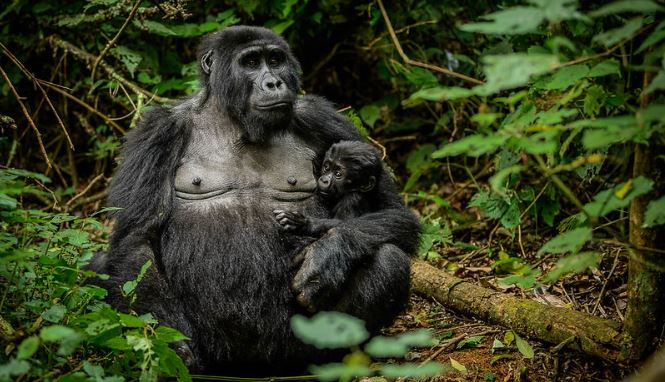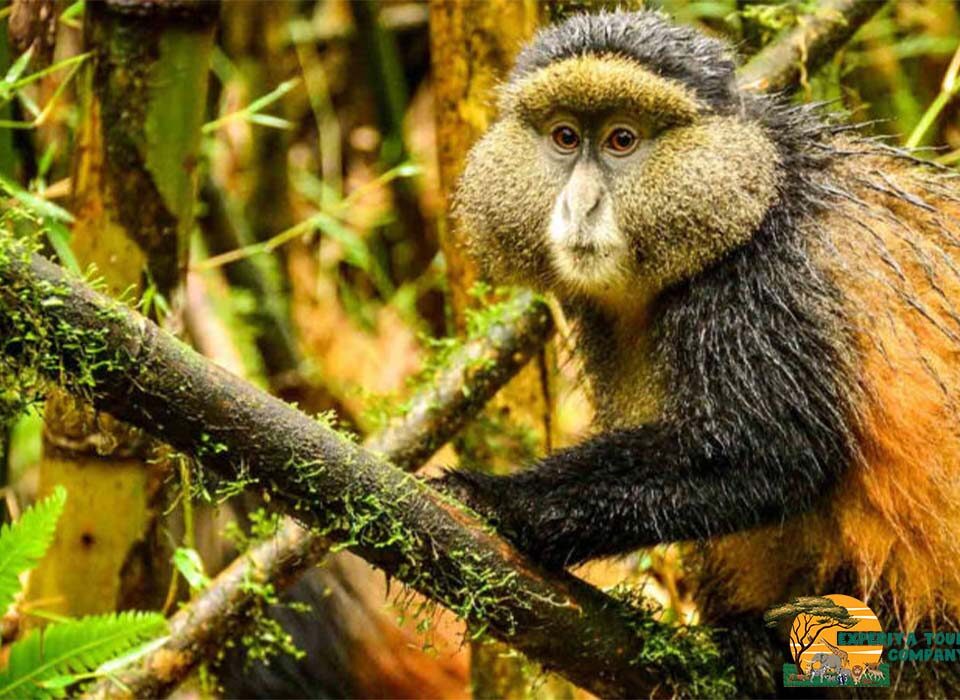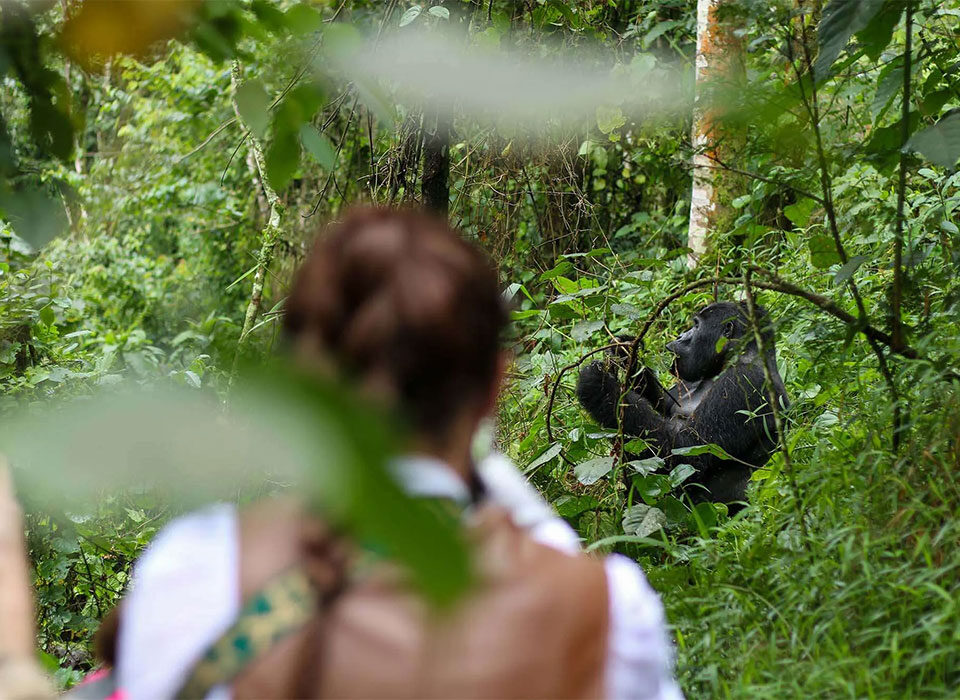
How Long Does a Gorilla Trek Take in Uganda? | Uganda Gorilla Trekking Duration Explained by Experiya Tour Company
October 22, 2025
Can I Take Photos During Gorilla Trekking? | Photography Tips & Rules by Experiya Tour Company
October 22, 2025Are There Age Limits for Gorilla Trekking? | Uganda & Rwanda Gorilla Trekking Rules Explained by Experiya Tour Company

Are There Age Limits for Gorilla Trekking?
Gorilla trekking is one of the most thrilling and emotional wildlife experiences on the planet. Standing a few meters away from a family of mountain gorillas in their natural habitat — watching the silverback’s powerful yet gentle demeanor, or the infants tumbling playfully among vines — is a moment that forever changes the way you see nature. But before embarking on this adventure, one of the most frequently asked questions by travelers is: “Are there age limits for gorilla trekking?”
The simple answer is yes — there are specific age restrictions for gorilla trekking in all the countries where it takes place, including Uganda, Rwanda, and the Democratic Republic of Congo. These rules are set to protect both the gorillas and the trekkers themselves, ensuring safety, conservation, and respect for these endangered creatures.
In this detailed guide, we’ll explore everything you need to know about gorilla trekking age limits, why they exist, exceptions to the rule, and helpful tips for families who dream of this once-in-a-lifetime experience.
Official Gorilla Trekking Age Limit
The minimum age requirement for gorilla trekking in Uganda, Rwanda, and the DRC is 15 years old. This means that anyone below the age of 15 is not legally permitted to take part in a gorilla trek.
This rule is strictly enforced by the Uganda Wildlife Authority (UWA) in Uganda, the Rwanda Development Board (RDB) in Rwanda, and the Institut Congolais pour la Conservation de la Nature (ICCN) in the Democratic Republic of Congo.
When purchasing a gorilla trekking permit, travelers are required to provide proof of age, usually through a passport. Rangers at the park headquarters also verify this information during registration on the trekking day.
Why Is There an Age Limit for Gorilla Trekking?
The 15-year age limit isn’t arbitrary — it’s based on several important factors related to health, safety, and conservation.
1. Disease Transmission
Gorillas share about 98% of their DNA with humans, which means they are highly susceptible to many of the same illnesses that affect us, especially respiratory infections. Children are statistically more likely to carry or transmit communicable diseases such as flu, coughs, or colds without showing severe symptoms.
Since gorillas live in close-knit families and rely heavily on social interaction, a single infection could spread rapidly and cause significant harm to their population. The age limit helps minimize the risk of disease transmission from younger visitors who may not fully understand or follow the strict health protocols required during the trek.
2. Behavioral and Safety Concerns
Gorilla trekking requires participants to remain calm, quiet, and composed in the presence of the gorillas. Sudden movements, loud noises, or running could trigger defensive behavior, especially from dominant silverbacks who are protective of their families.
Younger children may find it difficult to stay still and silent for an hour or follow ranger instructions under intense, exciting conditions. The 15-year age limit ensures that trekkers are mature enough to behave responsibly in the gorillas’ presence, keeping both humans and animals safe.
3. Physical Demands of the Trek
Gorilla trekking is physically demanding. Trails often pass through steep hills, dense vegetation, and muddy terrain. Treks can last from 30 minutes to 7 hours depending on the gorilla group’s location.
While some children are physically fit enough for such challenges, the unpredictable nature of the hike makes it unsuitable for most underage participants. The minimum age requirement ensures trekkers can handle the physical strain without jeopardizing the group’s progress or their own safety.
4. Legal and Ethical Responsibility
Conservation authorities also have a legal duty of care to ensure the safety of visitors. Allowing children below 15 to participate in such demanding wilderness activities could raise liability and ethical concerns. The age rule therefore acts as a universal safety standard across all gorilla trekking destinations.
Can Exceptions Be Made for Younger Trekkers?
While the official age limit is 15, some exceptions can be granted in special circumstances — particularly in Uganda, where the Uganda Wildlife Authority may allow slightly younger trekkers under controlled conditions.
To request an exception, parents or guardians must write to the Uganda Wildlife Authority (UWA) explaining why their child should be allowed to trek. The letter should include the child’s age, physical fitness level, and maturity. The tour operator or travel agent can assist in submitting this request.
Exceptions are usually granted for children aged 13 or 14, but only if:
- The child appears physically strong and mature.
- The parents take full responsibility for their behavior during the trek.
- The child is healthy and shows no signs of illness.
- The family books a private trek to minimize disturbance to others.
Even with an exception, park rangers have the authority to deny participation on the trekking day if they feel the child isn’t ready or conditions aren’t suitable.
Why the Age Limit Protects the Experience
While it may seem restrictive, the 15-year age limit actually enhances the quality of the gorilla trekking experience. Every trekker in the group plays a role in ensuring a peaceful, safe encounter with the gorillas.
Mature trekkers are more likely to respect park rules — such as keeping a 7-meter distance, avoiding flash photography, and following ranger commands without hesitation. This discipline creates a serene environment where the gorillas feel secure, often resulting in longer, closer, and more relaxed interactions.
For families traveling with younger children, this rule also prevents unnecessary strain or frustration that might arise during a long, challenging trek. It ensures that everyone who participates is fully prepared to enjoy the moment.

Alternative Activities for Families with Young Children
If you’re traveling with children younger than 15, there are plenty of wonderful activities near Uganda’s gorilla parks that allow them to experience nature and wildlife safely while you trek the gorillas.
1. Nature Walks and Forest Hikes
Children can enjoy guided nature walks along the edges of Bwindi Impenetrable National Park or Mgahinga Gorilla National Park. These trails offer a chance to see monkeys, birds, butterflies, and unique plant species without venturing deep into the jungle.
2. Community Visits
Families can visit nearby communities, such as the Batwa cultural villages, where they’ll learn about the traditional forest life of Uganda’s indigenous people. Children love the storytelling, traditional dances, and crafts workshops.
3. Lake Bunyonyi Activities
Just a few hours from Bwindi lies Lake Bunyonyi, one of Uganda’s most scenic and child-friendly destinations. It offers safe canoe rides, island visits, and birdwatching in a tranquil setting perfect for relaxation while the adults are trekking.
4. Game Drives in Other Parks
Uganda’s other national parks, such as Queen Elizabeth National Park and Lake Mburo National Park, are ideal for family safaris. Children can see elephants, lions, giraffes, and zebras without strenuous hiking.
5. Lodge Activities
Many lodges around Bwindi and Mgahinga offer child-friendly programs, including nature classes, birdwatching, cooking lessons, and cultural performances. Parents can trek gorillas knowing their children are safe and entertained at the lodge.
Preparing Teenagers for Gorilla Trekking
If your child is 15 or older and eligible for gorilla trekking, preparation is key to ensuring they enjoy the experience.
- Physical preparation: Encourage regular walking or hiking before the trip to build stamina.
- Education: Teach them about gorilla behavior and conservation so they understand the importance of following rules.
- Packing: Make sure they wear proper hiking boots, gloves, long trousers, and carry enough water.
- Attitude: Emphasize patience and respect — gorilla trekking is not a race but a shared experience in the wild.
Teenagers who take part in gorilla trekking often describe it as one of the most eye-opening experiences of their lives, fostering empathy and a lifelong appreciation for wildlife conservation.
Health Requirements for All Trekkers
In addition to age restrictions, health is another crucial factor. Trekkers showing signs of illness — especially coughs, colds, or flu — may not be allowed to participate. Rangers can make this decision on the spot to protect the gorillas from infection.
All trekkers are also required to wear face masks when near the gorillas and maintain a respectful distance of at least 7 meters (about 21 feet). This ensures minimal risk of disease transmission while maintaining natural behavior within the gorilla families.
Why the Age Limit Benefits Conservation
The age limit also reinforces conservation ethics. By ensuring only responsible, mature individuals take part, the trekking program maintains high standards that prioritize gorilla welfare over profit. It helps sustain eco-tourism as a long-term conservation strategy, ensuring that future generations — including today’s children — can one day enjoy the same privilege of meeting wild gorillas.
Every permit sold directly funds gorilla protection, ranger patrols, veterinary care, and community projects. By the time children reach the eligible age, they’ll not only be old enough to trek but also understand the importance of preserving these gentle giants.
Plan Your Gorilla Trek with Experiya Tour Company
Gorilla trekking is a carefully managed adventure — one that requires professional guidance, permit reservations, and logistical coordination. For a seamless experience, it’s best to travel with an experienced local operator like Experiya Tour Company.
Experiya Tour Company is one of Uganda’s most trusted safari operators, specializing in gorilla trekking tours, wildlife safaris, and cultural experiences across Uganda and East Africa. Their expert team handles everything — from securing your gorilla permits and arranging accommodations to organizing transportation from Entebbe or Kigali.
Experiya ensures your trek is safe, memorable, and perfectly tailored to your needs. They also help families with younger children plan alternate activities while parents or older teens trek the gorillas. With their knowledgeable guides, top-notch service, and deep respect for conservation, Experiya makes your journey to the mountain gorillas smooth, responsible, and deeply rewarding.
If you’re ready to embark on one of the world’s greatest wildlife adventures, travel with Experiya Tour Company — where your safety, comfort, and connection with nature come first.



